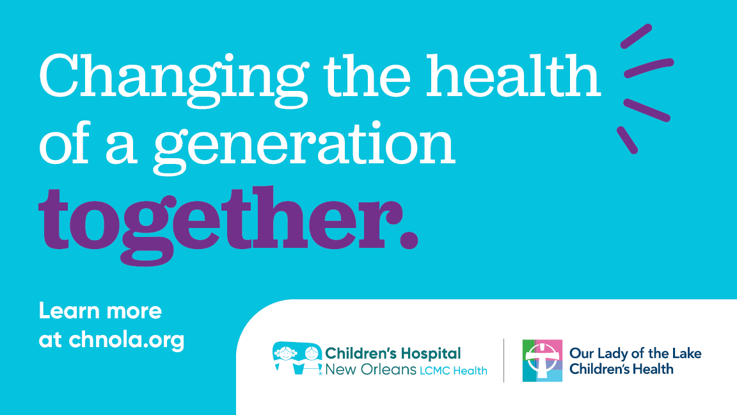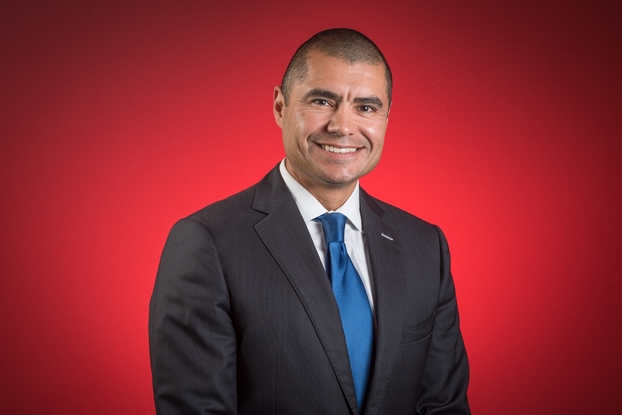Overcoming Sickle Cell Disease: Ambrose’s story of perseverance
- Category: Patient Stories, Hematology
- Posted on:

As a senior at Louisiana State University, Ambrose Gabriel is an ambitious student with big dreams. When he graduates next May, he can’t wait to pursue his passion of being a serial entrepreneur.
“I thrive on the challenges and opportunities that accompany pursuing, growing and managing multiple business ventures,” said Ambrose. “One day, I hope to turn my vision into reality.”
Ambrose is no stranger to confronting difficult challenges.
In fact, they have made him stronger and more resilient.
Shortly after birth, Ambrose was diagnosed with Hemoglobin SS (HgbSS), the most severe form of sickle cell disease. This inherited blood disorder impairs the structure and function of hemoglobin, a protein that carries oxygen to the body in red blood cells. The abnormal hemoglobin alters the shape and function of red blood cells, which are normally circular and move smoothly through the bloodstream. However, in individuals with sickle cell disease, red blood cells are crescent-shaped. As they travel through the bloodstream, they can stick together and clog blood vessels, resulting in reduced blood flow to the body. This can trigger pain crises in the affected organs and tissues.
“I would always compare myself to other people,” said Ambrose. "Because of my inherited blood disorder, I would tire more quickly than most people. It was so frustrating when I couldn’t match the energy levels of other children. But I eventually learned to accept and embrace my uniqueness.”
Living with sickle cell disease
Approximately 1 in 13 African Americans carries the sickle cell trait, meaning they have one copy of the mutated gene. Usually, carriers remain healthy and do not develop the disease, unless they inherit both versions of the mutated gene – one from each parent – as in Ambrose’s situation.
As a child growing up with sickle cell disease, Ambrose faced his fair share of uphill challenges.
 “I felt tired all the time,” said Ambrose. “I also experienced chills, fevers and shortness of breath. As a kid, I had a lot of upper respiratory infections, and I couldn’t play contact sports. I wanted to play football but my mom didn’t allow it. If I got injured, it would take a longer time for me to heal. For people with no sickle cell, they might recover in a day or two. For me, it would take several weeks.”
“I felt tired all the time,” said Ambrose. “I also experienced chills, fevers and shortness of breath. As a kid, I had a lot of upper respiratory infections, and I couldn’t play contact sports. I wanted to play football but my mom didn’t allow it. If I got injured, it would take a longer time for me to heal. For people with no sickle cell, they might recover in a day or two. For me, it would take several weeks.”
He says the most difficult part of the disease was the pain crises, which struck without warning.
“Certain things would trigger the pain like sudden weather changes,” said Ambrose. “During cold weather, my joints hurt. I had to bundle up. The pain was unbearable. As a kid, I had more pain crises as I wasn’t too disciplined with taking medicine. As I got older, these episodes subsided.”
In addition to pain crises, Ambrose had other complications related to sickle cell disease. When he was 5 years old, he underwent surgeries to remove his adenoids, gallbladder, and spleen. Ambrose had splenic sequestration, a condition in which a large number of sickle cells become trapped in the spleen, leading to its enlargement, which can be life-threatening and requires immediate care.
“I got blood transfusions on rare occasions,” said Ambrose. “I probably got around five blood transfusions throughout my life.” Blood transfusions can help reduce the concentration of sickle hemoglobin in the blood and help alleviate symptoms associated with sickle cell disease.
Managing the illness
 Ambrose, now 22, has learned how to take better care of himself and control his symptoms - thanks to Dr. Renee Gardner, his long-time pediatric hematologist at Children’s Hospital New Orleans, who he describes as “one of the most amazing doctors I could have ever asked for.”
Ambrose, now 22, has learned how to take better care of himself and control his symptoms - thanks to Dr. Renee Gardner, his long-time pediatric hematologist at Children’s Hospital New Orleans, who he describes as “one of the most amazing doctors I could have ever asked for.”
“Dr. Gardner not only treated my illness, but she educated me on sickle cell disease, and what I needed to do to manage my illness and symptoms so I can live a normal life,” said Ambrose.
As part of his treatment, he takes hydroxyurea, a medicine that helps increase the production of fetal hemoglobin and prevents the formation of sickle-shaped red blood cells. Additionally, he takes penicillin daily to prevent infections, and folic acid, which aids in the production of red blood cells.
“The experiences and complications of sickle cell disease can vary from person to person,” said Dr. Gardner. “The treatment of this disease aims to manage symptoms, prevent complications, and improve the overall quality of life for these patients. While there is no cure for sickle cell disease, advancements in medical care have improved how we manage this condition. Ambrose has been very compliant throughout his life and therefore his disease has been relatively well controlled.”
Ambrose sees Dr. Gardner every three months to screen for any complications from the disease, and to monitor his lab work. He will soon be transitioning to an adult provider to continue to manage his blood disorder. In addition to taking his prescribed medicines, he has made several lifestyle changes to help him better manage his symptoms and improve his overall well-being.
“I make sure to drink plenty of water to keep my blood flowing and reduce the likelihood of red blood cells sticking together,” said Ambrose. “You have to.jpg) keep yourself hydrated, because if you don’t, dehydration can trigger sickle cell crises. I also exercise regularly, but I don’t overdo it. I balance exercise with adequate rest to avoid excessive fatigue, which can trigger a pain crisis.”
keep yourself hydrated, because if you don’t, dehydration can trigger sickle cell crises. I also exercise regularly, but I don’t overdo it. I balance exercise with adequate rest to avoid excessive fatigue, which can trigger a pain crisis.”
“Sickle cell disease does not define who I am. I am bigger than my disease.”
Ambrose doesn’t allow sickle cell disease to dampen his determination to persevere.
His advice to others who are facing the daily struggles of the disease is to not let it defeat or define them. Instead he says to concentrate on those things that are within your power to control.
“It’s not easy living with sickle cell disease,” said Ambrose. “But I am fortunate enough to have Dr. Gardner and my parents who have supported me every step of the way in my sickle-cell journey. I continue to do everything I can to stay healthy so I can focus on reaching my true potential in life.”
To learn more about the Center for Cancer and Blood Disorders at Children’s Hospital New Orleans, visit https://www.chnola.org/our-services/hematology-oncology/.



